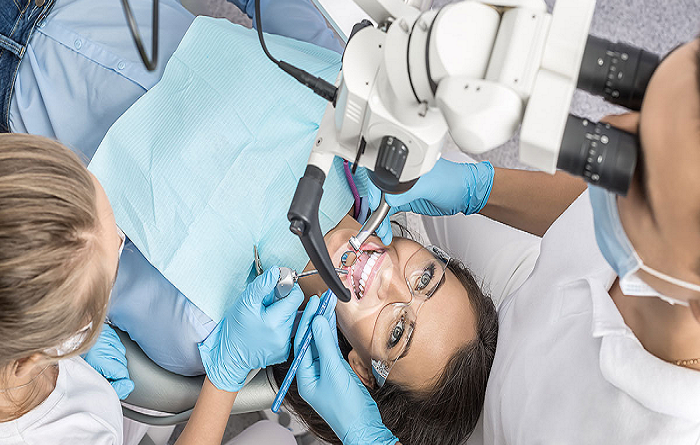Things You Should Know Before Root Canals Therapy
When a tooth’s pulp tissue becomes infected or damaged—a condition that can be brought on by decay or dental trauma—root canal therapy, also known as endodontic therapy, may be required. Blood vessels, nerves, and connective tissue are all found in the pulp, which is found inside the tooth canals. There are typically one to four root canals in a tooth. One or more root canals in a tooth may need to have a root canal procedure done. An actual tooth component, a “root canal” is not a medical procedure. Known by another name, pulp, is the hollow area of a tooth that houses blood vessels, nerve tissue, and additional cells. The roots and crown make up a tooth.
Generally speaking, the roots are below the gum line and the crown is above. To the jawbone, the tooth is attached by its roots. The pulp lies within the root canal, which is the space between the crown and root. In addition to providing moisture to the surrounding material, the root canals Little Rock AR nourishes the tooth. Warm and cool temperatures are perceived as pain by the pulp’s nerves. Actually known as endodontic therapy—which translates to mean “inside the tooth”—this dental procedure is commonly referred to as a “root canal.”. The phrase “root canal,” however, is now frequently used to refer to the operation.
Root canals Little Rock AR therapy is done in three steps, and it takes between one and three sessions to complete.
1.The dentist starts by cleaning the root canal by taking everything out of it. The dentist creates a tiny access hole on the tooth’s surface while the patient is under local anesthesia, then uses tiny files to remove the diseased and dead pulp tissue.
2.Filling the root canal Using tiny files and irrigation solutions, the dentist then shapes, cleans, and decontaminates the hollow area. Next, an adhesive cement is used to completely seal the canals before filling the tooth with a substance that resembles rubber. The tooth is dead following root canal therapy. Due to the removal of the nerve tissue and the removal of the infection, the patient will no longer experience any pain in that tooth.
3.But after getting a crown or filling, the tooth will become more brittle. A tooth without pulp needs its nutrition from the ligament holding the tooth to the bone. Although this supply is sufficient, the tooth will eventually become more brittle, so a crown or filling provides protection. Patients shouldn’t bite or chew on their teeth until the crown or filling is finished. After receiving a crown or filling, the patient can resume using the tooth as usual. A single appointment is usually sufficient for treatment; however, if multiple canals, curved canals, or significant infections exist, it may require one or two extra sessions.
How painful is it?
One of the biggest concerns with root canals Little Rock AR treatment is that it will hurt, but when done by a skilled dental surgeon, it should not hurt too bad. It is the infection, not the treatment, that is causing the pain. Pain is not increased by the treatment; rather, it is lessened. By using local anesthetic to numb the tooth and surrounding area, the dental surgeon will lessen the pain associated with the procedure. Some soreness is normal after the treatment. Because of its transient nature, over-the-counter (OTC) painkillers might be sufficient to relieve it. Prescription medications are available, including codeine, if necessary. To treat or prevent infection, the dentist may recommend an antibiotic.
Why do people need root canal therapy?
If bacteria in your mouth find their way into the pulp of your teeth and inflame it, you might require a root canal (pulpitis). A deep cavity that requires treatment could expose your tooth pulp to bacterial invasion. Plaque bacteria have infected the pulp of your tooth, causing it to become cracked or damaged.

